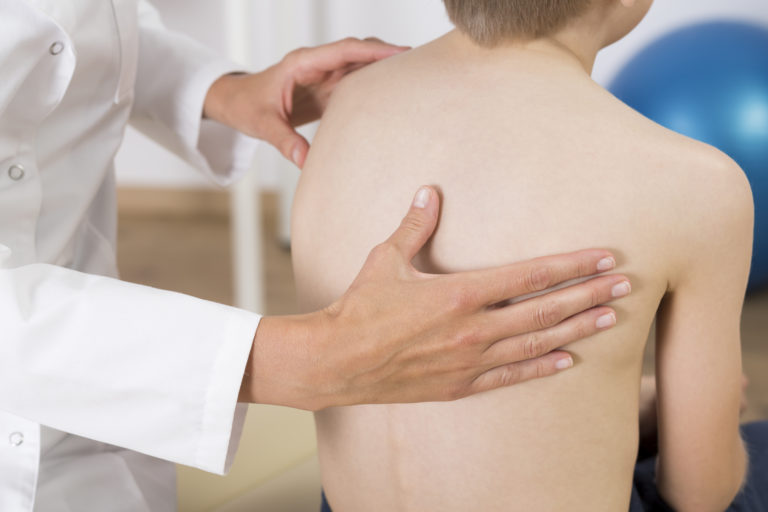
Scoliosis can be detected with a simple test in a physician’s office
As parents, we want our children to grow healthy and strong, a foundation that often starts with their bones. Scoliosis, commonly known as curvature of the spine, can present a big obstacle to this foundation, but what exactly causes it? How can you prevent scoliosis from developing in your child?
The Bone and Joint Institute at Cooper University Health Care can provide you with the insight to help your child overcome this condition. Scoliosis is often identified during back-to-school physicals and routine check-ups, so don’t hesitate to visit one of our primary care locations in New Jersey and the Delaware Valley area
What Is Scoliosis? Understanding Scoliosis and Its Causes
Scoliosis can affect any child, especially during periods of rapid growth such as puberty. It can result from genetic abnormalities or, less commonly, from repeated injury to the spine. Many times the cause can’t be determined.
Types of Scoliosis
Scoliosis is characterized by an abnormal lateral (sideways) curvature of the spine. There are several types of scoliosis:
- Idiopathic scoliosis is the most common form of the disease, accounting for about eight in 10 cases. In these instances, there is no apparent cause, though genetics or repeated injury or infection may play a part.
- Neuromuscular scoliosis may develop in someone who has difficulty walking due to a neuromuscular condition such as cerebral palsy, muscular dystrophy, or spinal dysraphism.
- Congenital scoliosis develops in the womb and is present at birth. This rare form of scoliosis may be caused by malformation in the vertebrae and in most cases must be corrected with surgery.
- Degenerative scoliosis occurs later in life, in adults who experience degeneration of the joints in the spine.
Scoliosis Complications
If the scoliosis is left untreated, several long-term complications may develop. The lung or heart can suffer lasting damage, for instance, and breathing may become more challenging as the spine continues to curve. Chronic back pain will also set in with detrimental changes in posture.
Scoliosis Signs and Symptoms: Who Is at Risk?
A big part of understanding scoliosis is being able to identify its signs and symptoms at an early stage and understanding which demographics are most at risk.
Warning signs can present early in children as uneven shoulder blades, disproportionate hips, or a visible curvature in the spine. To catch the disease, kids should undergo an annual physical test that checks for conditions such as scoliosis. During these simple tests, physicians will look for spinal curving, muscular weakness, and delayed reactions.
Noticeable symptoms of scoliosis often appear when a child hits a growth spurt just prior to or during puberty. In general, girls and boys are equally likely to develop mild scoliosis, yet the disease often worsens more rapidly for girls, prompting more aggressive treatment.
If there’s a history of scoliosis in your family, the disease can also be passed down. Keep an eye on your children to identify these signs early on.
Forms of Treatment for Scoliosis
A scoliosis-affected spine usually can be straightened using either a brace or surgery. Your expert physician will consider a patient’s sex, severity of the curve, the curve pattern, and location of the curve when determining the proper form of treatment.
If a brace is considered the best method, it must be worn day and night to help the bones grow properly over time.
Scoliosis surgery is a more extreme measure, but if deemed necessary by a physician, the patient will likely undergo a spinal fusion procedure. Spinal fusion connects two or more vertebrae together, so they stop moving independently of one another.
Don’t Leave Scoliosis Untreated
Failing to address scoliosis at a young age can result in the disease progressing into adulthood. Along with physical abnormalities, such as misaligned hips or excessive height loss, scoliosis in adults can cause back pain, a weakness of core musculature, loss of conditioning, and leg pain.
Trust Cooper Bone and Joint Institute
Should your child show symptoms of scoliosis at an upcoming physical, you can conveniently schedule an exam at Cooper University Health Care. Our acclaimed Bone and Joint Institute has 12 different offices located in South Jersey and the Delaware Valley.
There’s no reason why we can’t stop scoliosis together. Request an appointment at Cooper for your child today!
